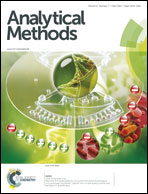Study of degradation mechanisms of cyclobenzaprine by LC-MS/MS
Abstract
A systematic forced degradation study of cyclobenzaprine (CBA) for the elucidation of the degradation mechanism was carried out in this work to support the new formulation development. Various forced degradation conditions such as acid and base hydrolysis, peroxide oxidation, UV light exposure, high heat and humidity were used to elucidate its degradation profiles. It was then discovered that the protonation of the tertiary amine group of cyclobenzaprine under the acidic conditions enabled us to study the oxidation on exocyclic and endocyclic double bonds as well as on the tertiary amine group of cyclobenzaprine in the very short time frame, which overcame the limitation of the common forced degradation study. Liquid chromatography-atmospheric pressure chemical ionization-mass spectrometric technique (LC-APCI-MS) has been used to obtain accurate molecular weight and structural information of cyclobenzaprine and its degradants. A total of fifteen major oxidation products and impurities of cyclobenzaprine were identified and characterized by using LC-MS and LC-MS/MS. These include the bisacid, Cannizzaro degradants, the glycols, the bisaldehyde, ketone derivatives, epoxides, amitriptyline (impurity), the N-oxide, anthraquinone, and dibenzosuberenone. Other techniques such as preparative LC isolation, organic synthesis, photodiode array detector and nuclear magnetic resonance (NMR) spectrometer were also used to obtain the definite structures of the degradants. Our data clearly indicates that cyclobenzaprine degraded through the oxidation of both the endocyclic and exocyclic double bonds to form epoxides as well as oxidation of the tertiary amine group to generate the N-oxide. These unstable epoxides undergo further degradation to more polar compounds and subsequent cleavage of the alkyl side-chain to form dibenzosuberenone and anthraquinone as the final degradation products.


 Please wait while we load your content...
Please wait while we load your content...